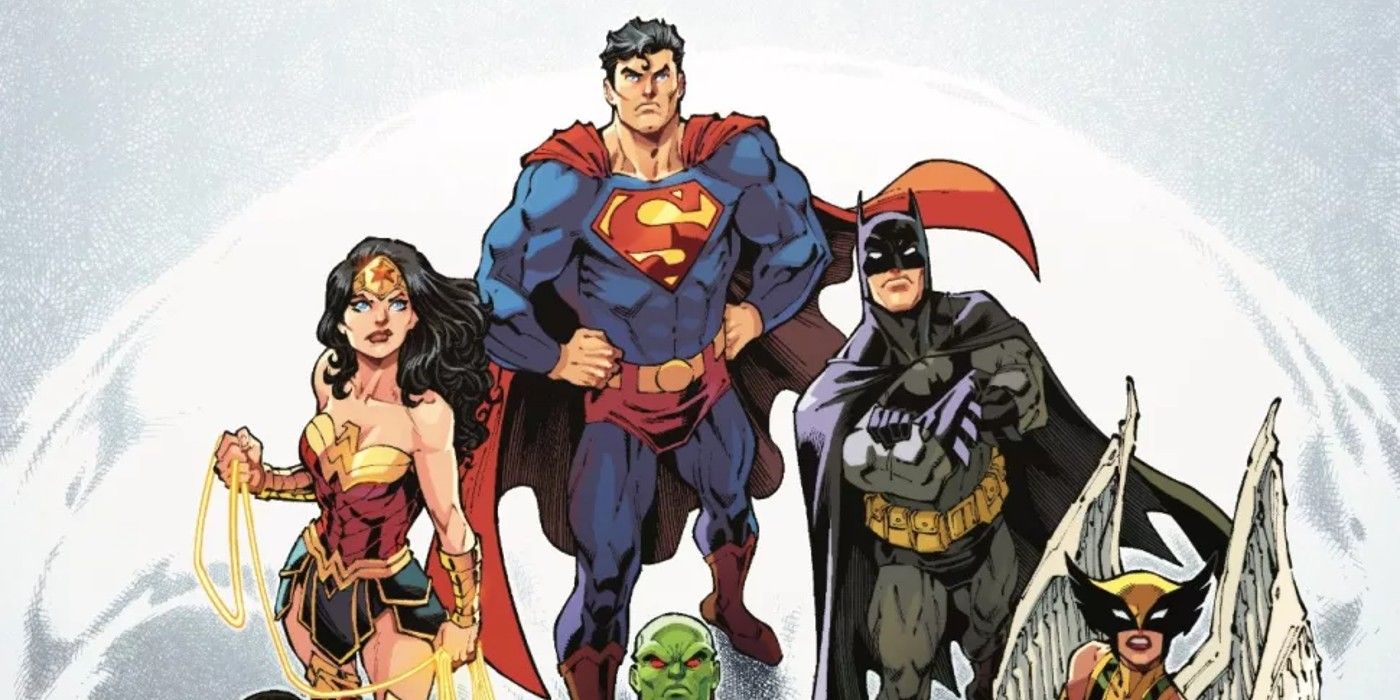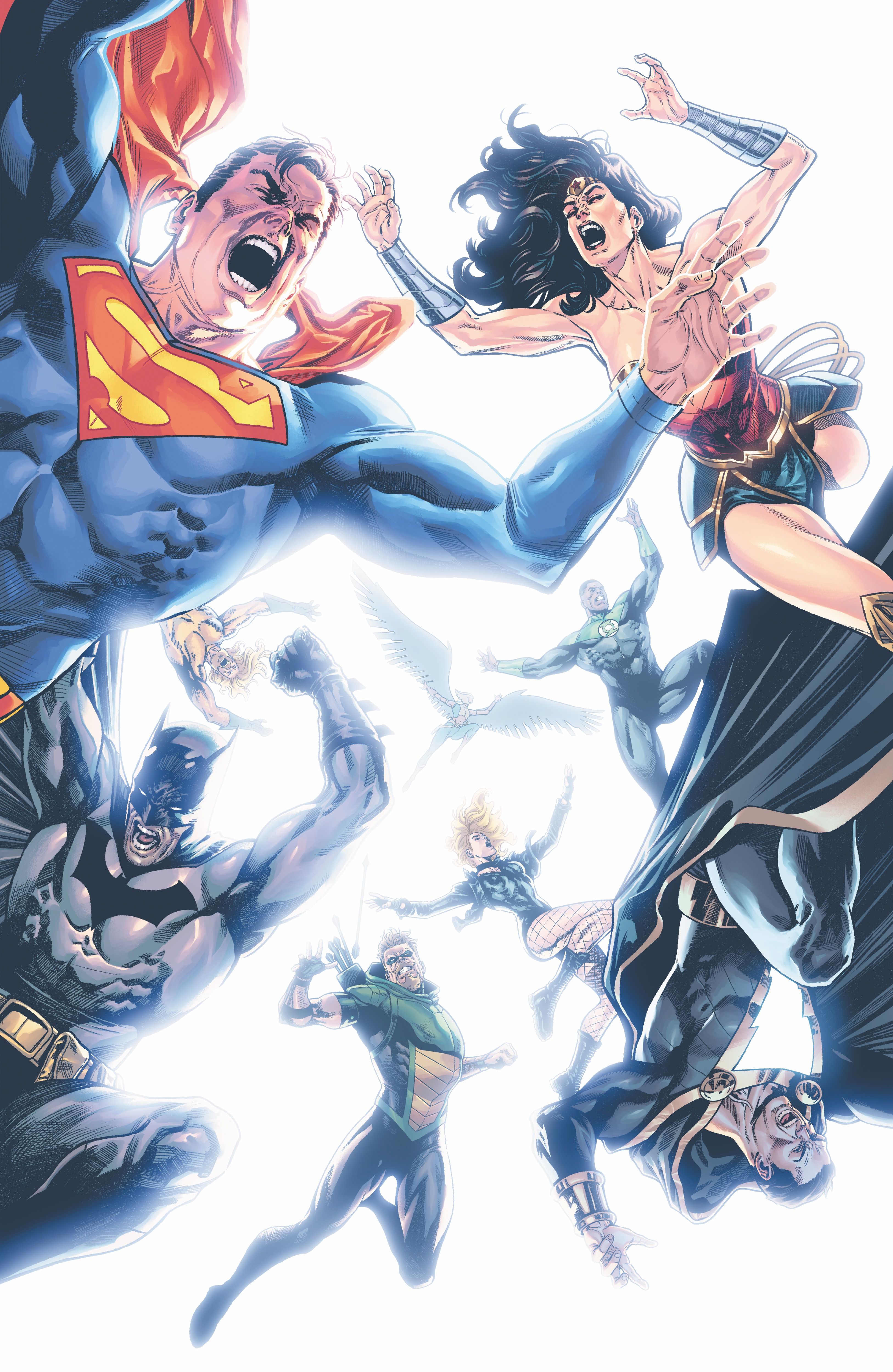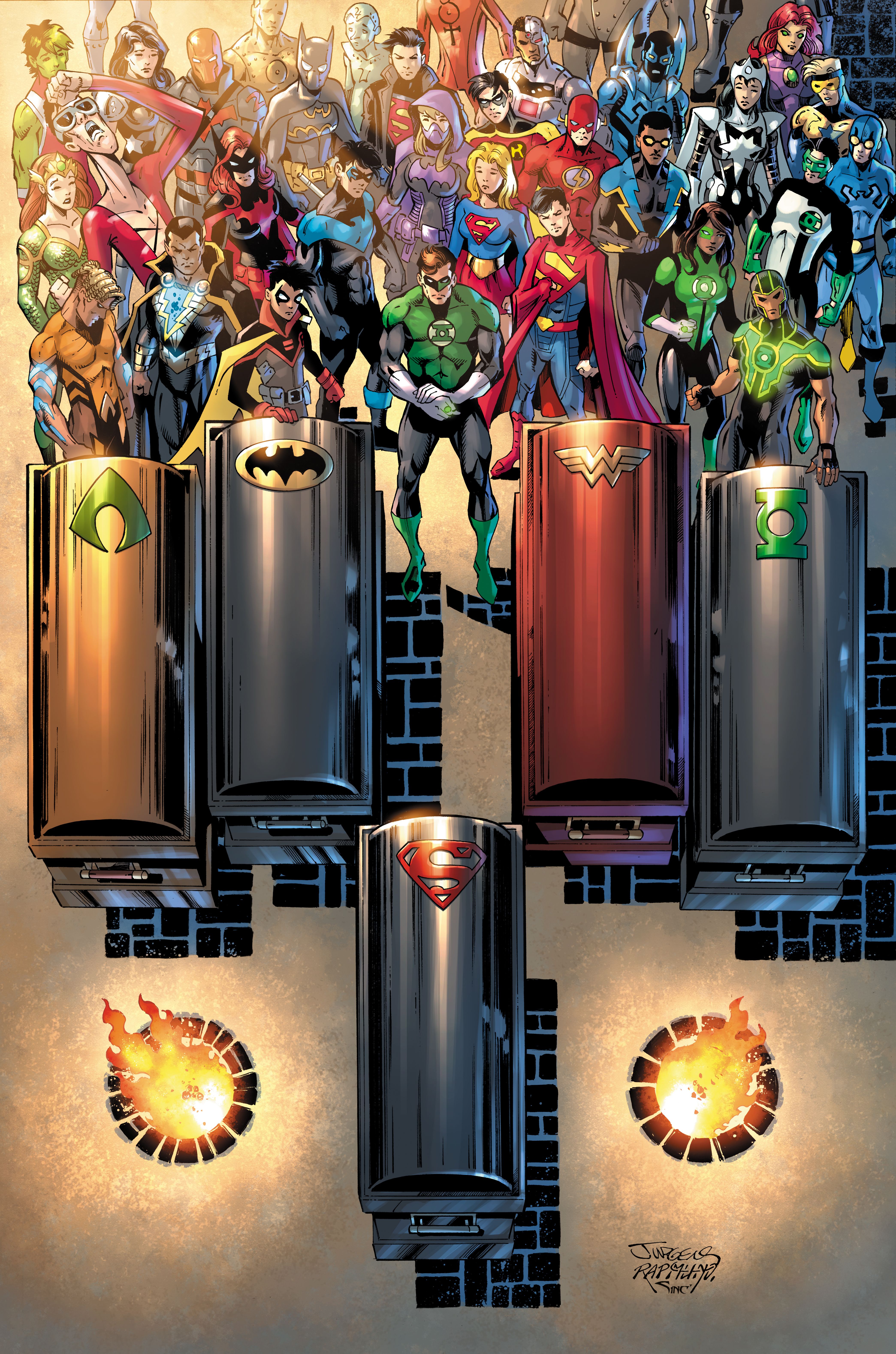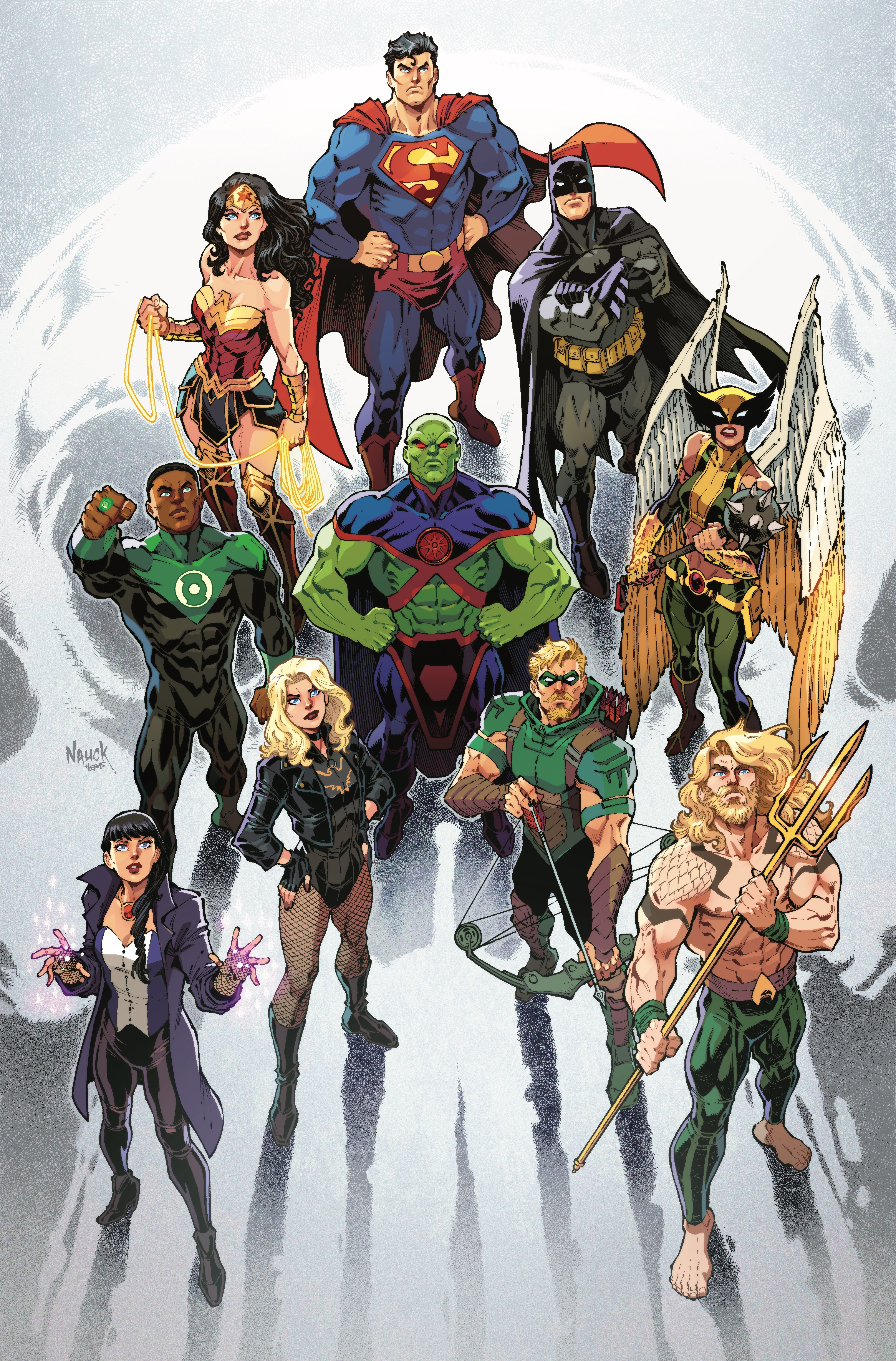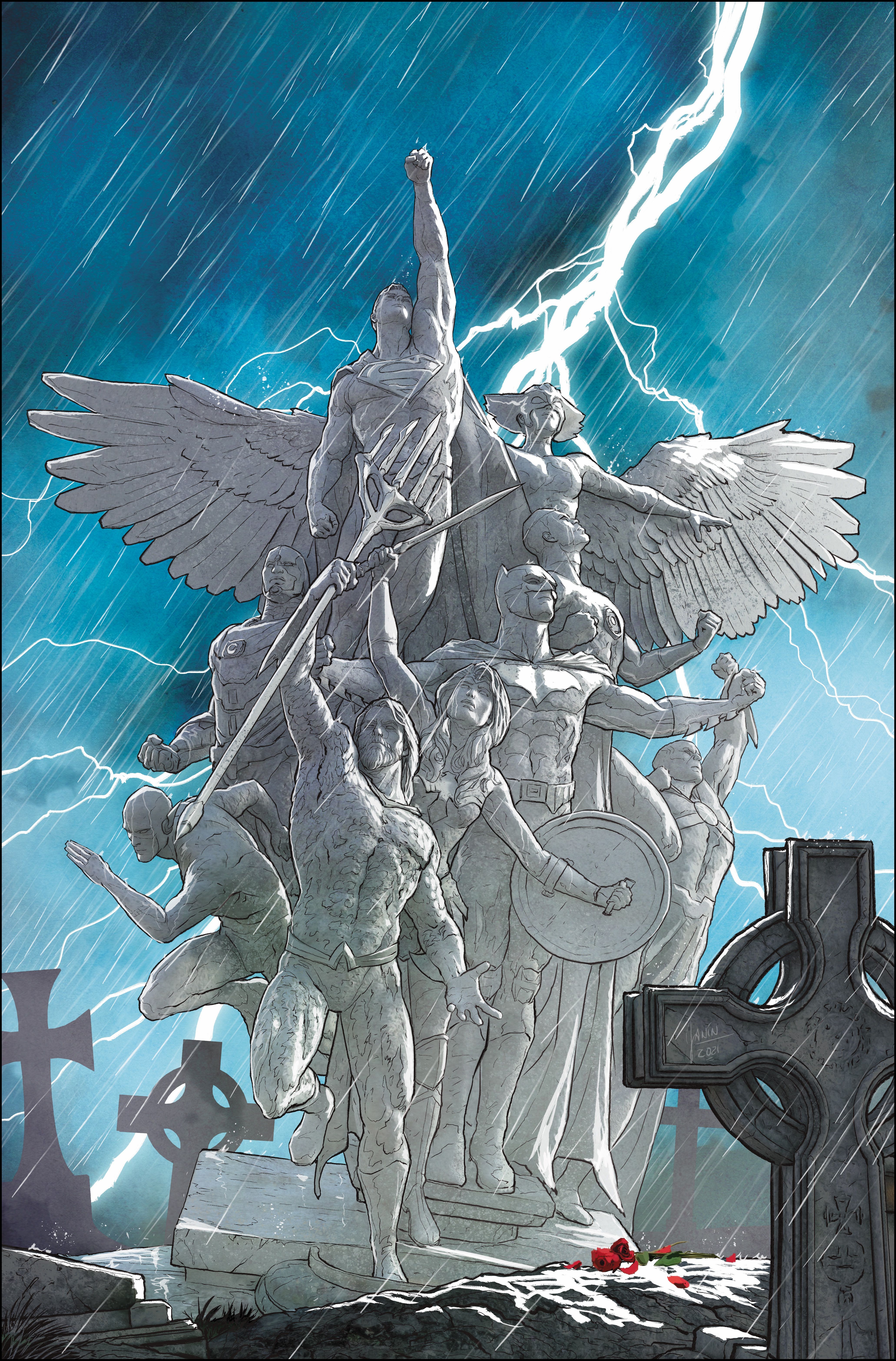Since the start of the Infinite Frontier era, the DC Multiverse's heroes have been building an epic showdown against the Great Darkness. Now they are in for a bigger fight than they bargained for in "Death of the Justice League." Written by Joshua Williamson and with artwork by Rafa Sandoval, the story unfolds in April's Justice League #75. The Justice League is called to confront the sinister Dark Army, headed by the multiversal villain Pariah. True to its title, most of the heroes won't be returning home alive from this cosmic showdown.
In a roundtable interview attended by CBR's Sam Stone, Williamson laid out the grim stakes behind "Death of the Justice League." Williamson hinted how the story directly informs this summer's DC crossover event Dark Crisis and shared some of the classic clues behind the lethal stakes to the story. Also included with this comic feature is the main cover to Justice League #75, drawn by Daniel Sampere and colored by Alejandro Sanchez, and Justice League #75 variant covers by Dan Jurgens and Norm Rapmund, Todd Nauck, and Mikel Janin.
Williamson assured everyone he made Justice League #75 as new-reader-friendly as possible. Those who haven't kept up with Brian Michael Bendis' Justice League run or other preceding stories like Infinite Frontier or Justice League Incarnate are able to jump right in. Williamson similarly took this storytelling approach with the upcoming crossover event Dark Crisis but promised to reward readers who have kept up and who will "get something more from that experience." Williamson pointed to the big narrative details readers need to be aware of going into the issue is that Barry Allen has mysteriously disappeared, and Darkseid has been possessed by the corrosive Great Darkness. Williamson credited Bendis for suggesting he add a brief expository recap at the start of the issue to help catch readers up organically.
"I picked a few characters to give the room for more emotional stuff," Williamson explained in response to a question from CBR's Sam Stone about bringing emotional moments to an action-heavy issue. "Because I knew it was going to be such a packed issue, I knew I wasn't going to be able to give everyone a lot of screen time. We're coming into this story hot. I knew what I needed to accomplish and the goals that I had and I knew what Rafa's strengths are. I knew Rafa does really big fight scenes really well which is why they were my first and only pick for this issue."
"I tried to write towards Rafa's strengths but I picked a few characters to give a little bit more heart and room and rest I just got to where they had to go," Williamson continued. "That really helped because team books are really difficult and doing something like this where it's all about the fights and making sure that stuff is clear. Once I knew which characters [would get the emotional moments], it was easy to script and wrote to Rafa's strengths. Rafa does amazing two-page spreads so let's do three two-page spreads in a row. Rafa drew those spreads first because we also knew there was so much going on with them. The two-page spread of all the villains, they drew that first."
Williamson admitted that the story is heavily influenced by the 2005 crossover event Infinite Crisis, with the series being one of the last major DC titles to be released while Williamson was working at a local comic book store at the time. In reading Infinite Crisis and Crisis on Infinite Earths, Williamson pointed out that this all began because of Pariah revealing the existence of the matter multiverse to the Anti-Monitor, spending "a thousand years in the dark before the Monitor rescues and curses him to watch all these worlds die." Williamson pondered what this all would do to Pariah, especially with him never facing any additional consequences for unleashing the Crisis. Williamson saw this story as a way to bring back Pariah to the forefront of the DCU, mirroring Superboy-Prime and Alexander Luthor's own descent into villainy in Infinite Crisis, with Williamson calling Pariah's decision to use the Great Darkness "nihilistic" in an attempt to destroy reality completely.
With the Justice League definitively killed on-panel in Justice League #75, Williamson didn't want their demise on the page to "feel like a snuff film" in its visual execution. Rather than depicting the team's deaths are overly gruesome and bloody, Williamson leaned into established tropes of iconic deaths in the DCU, including an homage to how The Flash dies in Crisis on Infinite Earths. While Williamson preferred to surprise readers as much as he can, he wanted to change things up for Justice League #75, with its cover heralding the death of the team. Given the nature of death in the DCU, characters react differently to the grim news, with some skepticism that the deaths are permanent, echoing reader expectations surrounding the story.
Williamson recalled that when he started at DC, he had a particular interest in getting to write a story that featured Green Arrow but it "never worked out." With many of Williamson's projects during the Infinite Frontier era, the writer went as far as to include many of Green Arrow's supporting cast into the titles he was working on. This made the prospect of killing off Green Arrow, alongside the Justice League, a heartbreaking proposition but Williamson softened the blow by giving the Emerald Archer a prominent role in Justice League #75.
CBR then asked Williamson about the issue's overt references to the Great Darkness and Great Disaster, two cataclysmic incidents in the DCU mythos. "The Great Darkness is such an interesting thing to me because it's not a person or thing," Williamson replied. "It's just a constant, it's weird to even call it a character. Having Pariah trying to take control of the Great Darkness but not realizing the Great Darkness is actually controlling him."
Williamson referenced The Saga of Swamp Thing tie-in issues to Crisis on Infinite Earths, with Swamp Thing and John Constantine addressing the Great Darkness. Williamson connected this to the opening of Crisis on Infinite Earths, with "the Darkness screaming" as the multiverse is born while Pariah is constantly referring to unseen darkness. Williamson shared that he spoke some time ago with Grant Morrison about Dark Crisis and his other DC plans, with Morrison suggesting that Williamson tie his story to the Great Disaster.
"The thing that I found that was so fascinating is how much of the groundwork was already laid," Williamson noted. "It was about finding these pieces that were already connected and pulling them closer, that was really my priority. At the same time, I didn't want to make it feel like homework like you needed to study before reading this. It took a lot of research to find those connections that were already there."
With Justice League #75 also homaging the iconic death of Superman in Superman #75, Williamson also spoke with Dan Jurgens, who had written and drew the Man of Steel's last stand. Williamson was "jealous" that, following Superman's funeral in the comics, the Superman titles took a three-month hiatus to add emotional weight to the loss. This led to Williamson having Justice League #75 close out the comic book series while taking storytelling lessons from the Superman story's pacing, giving "the big moments room to breathe." These sensibilities also helped Williamson shape Dark Crisis and its immediate aftermath.
The idea of the supervillain team compromising Pariah's Dark Army was the product of planning sessions between Williamson, Scott Snyder, and James Tynion IV years ago about their personal favorite massive threats in the DCU. As the preview art for Justice League #75, the Dark Army is chained, with the question of "things would be worse" should the restraints be removed explored in Dark Crisis. This also gave Williamson an opportunity to subvert reader expectations about Darkseid, having the New God among the chained villains in the Dark Army rather than taking point himself. And even with this subversion, Williamson hinted that "there are more twists and turns coming in that narrative about who the villains are in the story."
Written by Joshua Williamson and with artwork by Rafa Sandoval, Justice League #75 goes on sale on April 19 from DC Comics.

